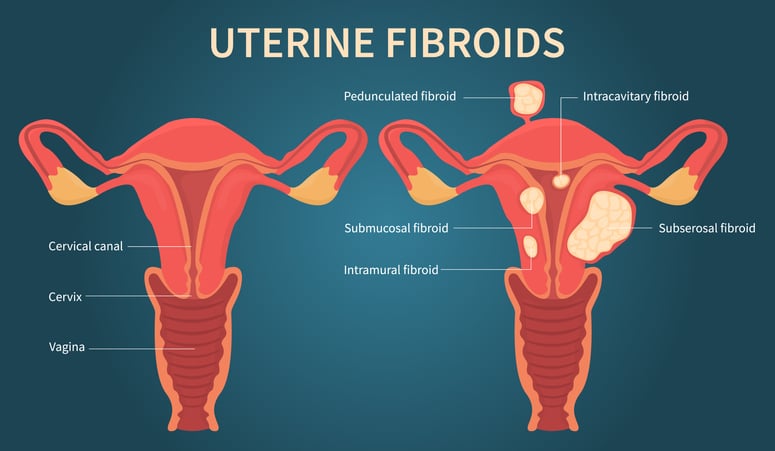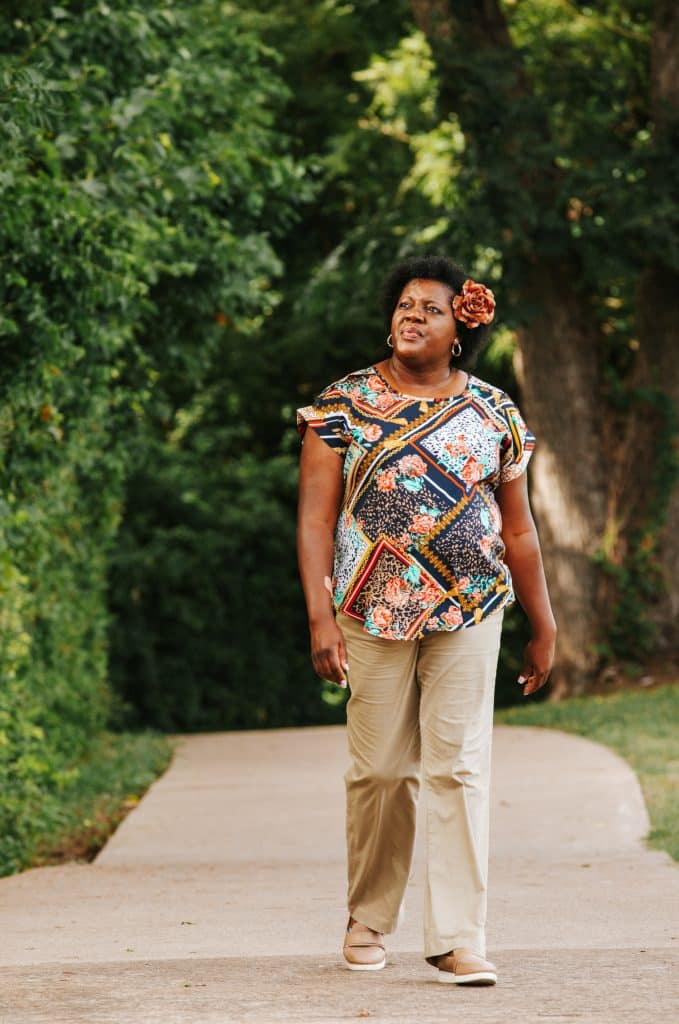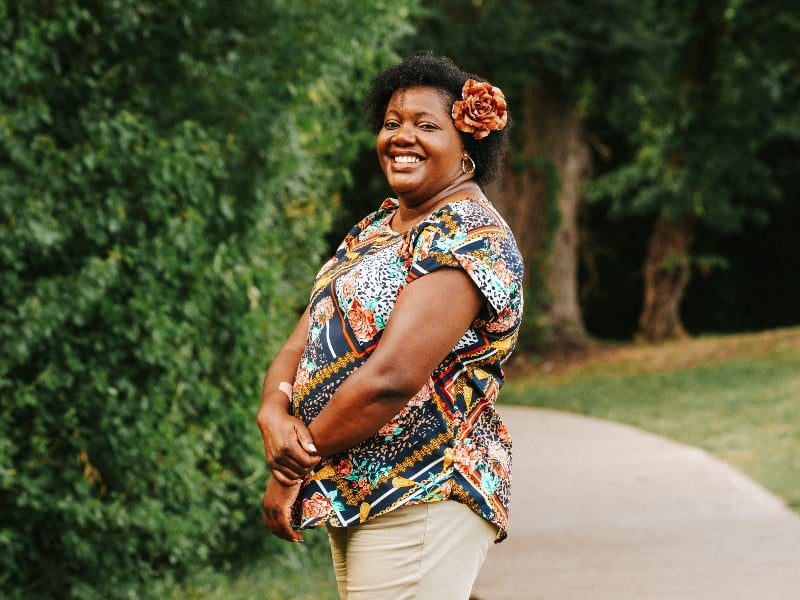Every month brought misery for Renee Cooper, whose extreme menstrual symptoms were caused by six uterine fibroids, ranging in size from a plum to an orange.
“I would go through eight pads on a typical day,” Renee says, describing intense periods of fatigue, cramping, and bleeding that sometimes kept her home. “I was constantly worried: Am I going to have an accident?”
Surgery was too risky because of an earlier lifesaving procedure to repair her aorta, but the 45-year-old food services director found the minimally invasive solution she needed at Methodist Dallas Medical Center, the same hospital that performed the surgery in 2008.
“These doctors have saved me more than once. I owe them so much.” —Renee Cooper
FIBROID EMBOLIZATION
Renee’s procedure — called uterine fibroid embolization — was performed by Islam Shahin, MD, an interventional radiologist on the staff at Methodist Dallas.
“Our staff has tremendous experience dealing with embolization,” Dr. Shahin says, referring to a procedure that uses tiny particles to stop bleeding or block the blood supply to a tumor.
Uterine fibroids are extremely common noncancerous tumors that grow in the uterus wall, mostly affecting women of childbearing age. Removal is recommended if the fibroids cause pain, excessive menstrual bleeding, or other severe symptoms.
Renee knew her symptoms weren’t normal, and they had gotten worse over a year — but it wasn’t until pain stopped her in her tracks one day at work that she vowed that something had to change.
She reached out to her primary care provider who recommended a CT scan. This diagnostic imaging showed that Renee had six uterine fibroids that were causing the intense pain and bleeding during her menstrual cycle.
Each monthly cycle held her captive at her DeSoto home for the first two days to avoid the embarrassment of bleeding through her period protection. Then, she’d wear long shirts and stay close to home, so if an accident happened, she could tend to it more easily.
“It definitely affected how I felt about life,” she says.

AVOIDING SURGERY
The next step for Renee was treatment, but her previous surgery posed some extra challenges for her medical team.
The typical treatment for uterine fibroids is surgical — either hysterectomy (removing the uterus) or myomectomy (removing the fibroids), but Renee was supposed to avoid surgeries after her aortic dissection in 2008. An aortic dissection is a tear in the large artery (aorta) that feeds the abdominal organs, intestines, and extremities.
Renee’s medical history and aortic dissection prompted her doctors to suggest a minimally invasive alternative, uterine fibroid embolization. During this procedure, a radiologist like Dr. Shahin injects tiny particles into the vessels that supply the fibroids, shrinking them by choking off their blood supply.
But to access these specific blood vessels, Dr. Shahin had to feed a catheter through Renee’s aorta, which was “challenging because of her specific anatomy and history of dissection,” he says.
“Renee’s case needed a lot of attention to detail,” he says. “The equipment we have here at Methodist Dallas helped me treat her. We have the appropriate technology to address complicated anatomy and complicated patients.”
After her aorta surgery in 2008, Renee had the utmost faith in the medical team at Methodist Dallas:
“I knew I was in good hands,” she says.

‘BACK TO NORMAL’
After the minimally invasive procedure, Renee spent a few days recovering at Methodist Dallas before being discharged to go home. Once she was back on her feet, she felt the positive effects of her procedure almost immediately.
“All of my cycles since the procedure have been light, and my energy is back to normal,” she says.
Dr. Shahin credits the entire staff with Renee’s successful outcome, saying it “takes a village,” from the scheduler to the doctors and nurses in patient recovery to ensure a positive result.
Renee started walking again at the park with her sister, her favorite way to exercise and keep her blood pressure in check.
“I’m a walking miracle,” she says.

